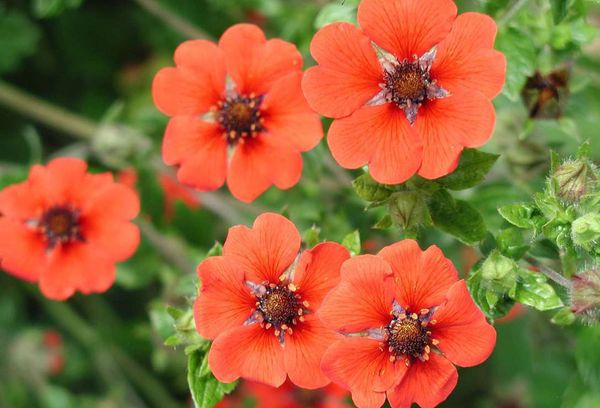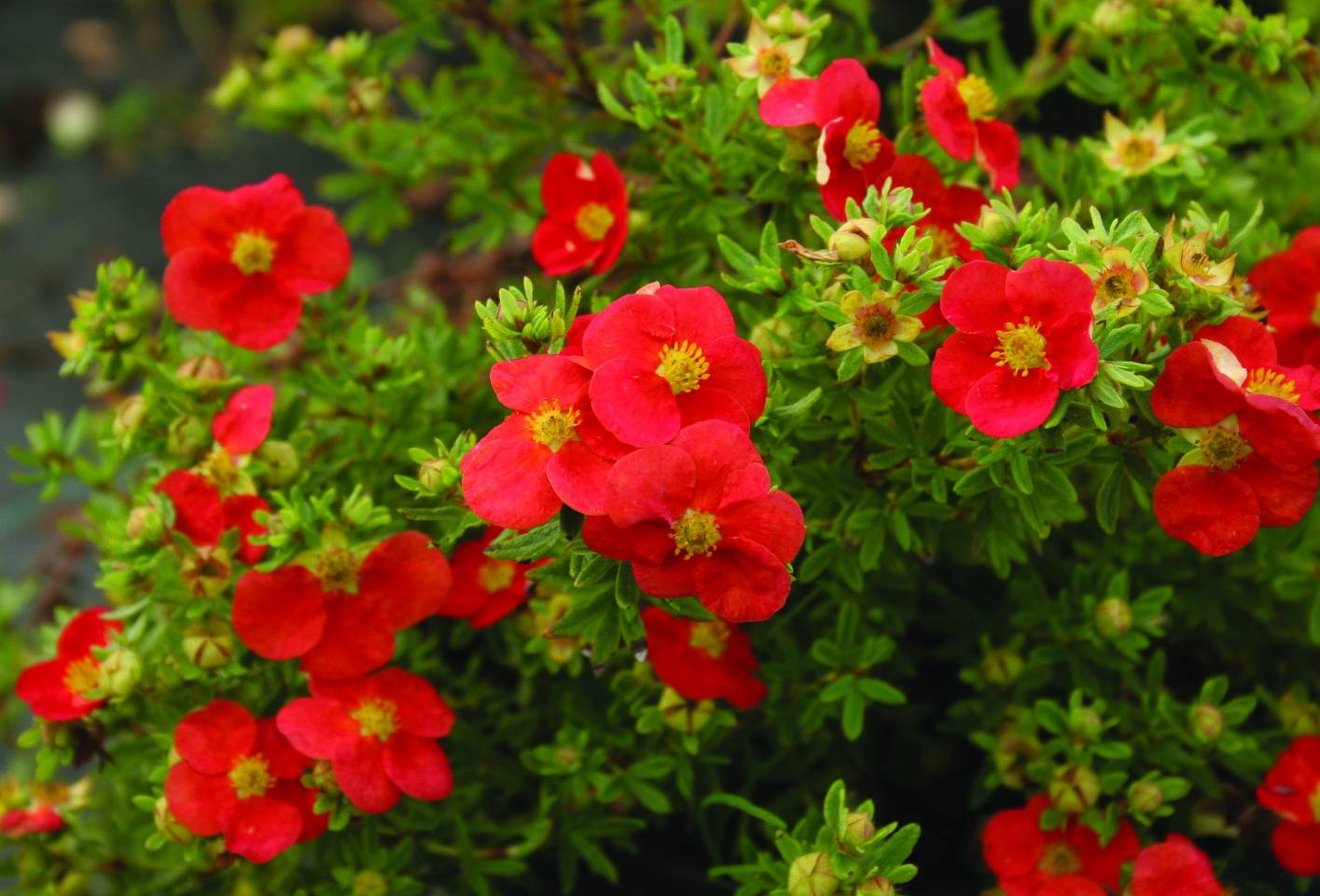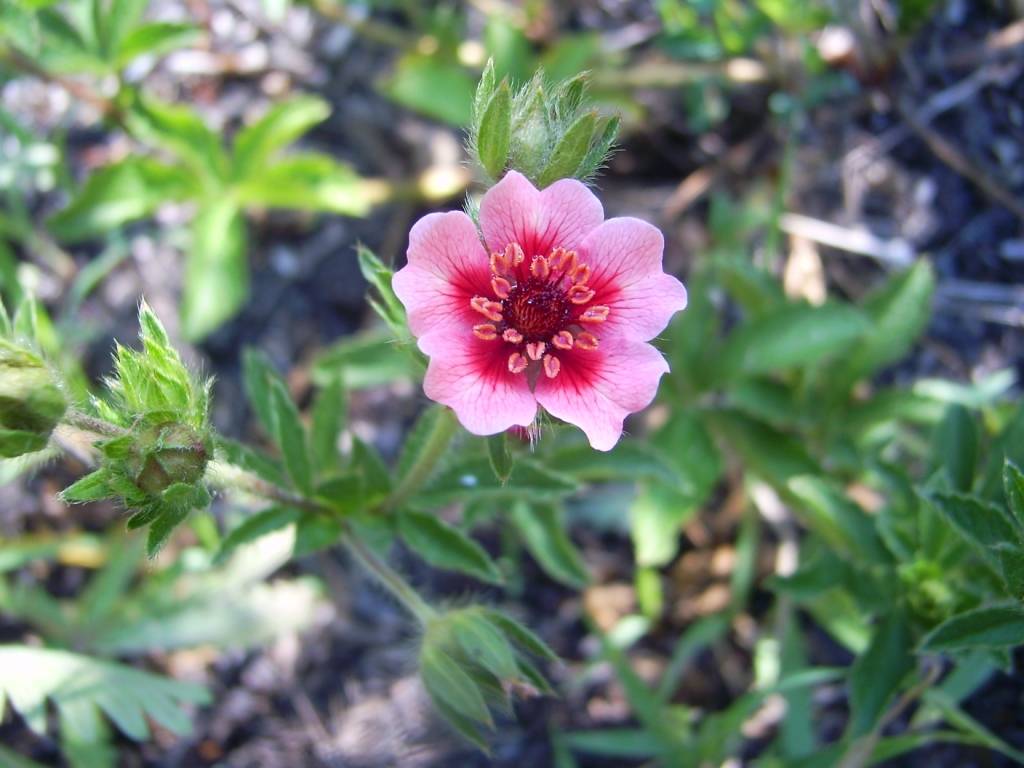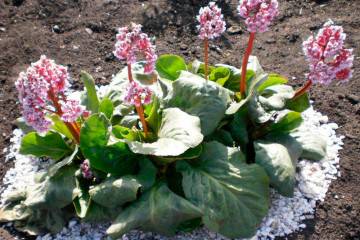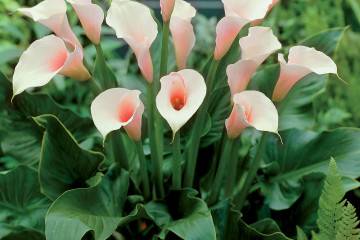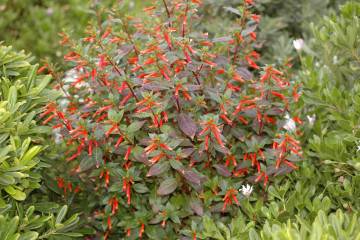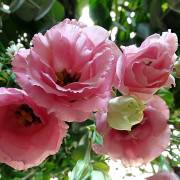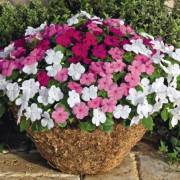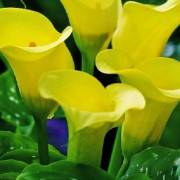Herb cinquefoil - planting and care
Content:
Herbaceous cinquefoil is a common plant in household plots. It looks interesting in the landscape, and also has healing properties. To successfully grow this flower in your garden, you need to know the basic nuances and rules of crop care.
Description of herbaceous cinquefoil
The genus of Potentilla herbal has more than 300 subspecies. Each plant is different in size and color, but has similar growing conditions.
Golden cinquefoil is one of the most popular plant species. The homeland of the flower is Asia Minor and Western Europe. It is a perennial shrub up to 20 cm high. Potentilla leaves are golden, with denticles along the edges. Blooms in large golden-yellow buds for 1.5-2 months.
Blood red cinquefoil originates in Nepal. It was from there that a plant with dark red flowers came. It is a tall herbaceous shrub up to 60 cm high. Abundant flowering begins in June and lasts 8-10 weeks.
Planting a perennial
This type of plant is not picky about growing conditions and can grow anywhere. The only exceptions are two types - white and shiny cinquefoil. The first flower prefers shaded areas, while the second grows only on sandy soils.
Other types of grass are recommended to be planted in lighted areas that have small shaded areas that protect the plant from bright sunlight.
Planting from seeds
Plant seeds are planted in a prepared container at the end of February and covered with foil. When the flower begins to enter, it is transferred to a room with a temperature of 14-17 ° C. When the seedlings release their first leaves, they are transplanted into new glasses. Flowers grow very slowly, and only by the end of August are they ready for transplanting into open ground.
For the winter period, Potentilla is covered with a film, and next summer will be the first flowering.
Planting seedlings in open ground
It is best to choose planting sites with moderate shade from other plants in the garden. The ideal soil is fertile, loose soil with a slight acidity.
Planting seedlings in the ground is carried out in the spring, when the ground has warmed up enough. Experts recommend adhering to the following scheme:
- The first step is to dig holes that are twice the volume of the roots.
- If several bushes are planted, then the distance between them should be at least 25 cm.
- Gravel is placed at the bottom of the pit, which will serve as drainage.
- The seedling is placed in the center, leaving the root collar above the ground.
- Thoroughly tamp and watered.
- To retain water, you can cover the ground with sawdust or conifer bark.
How to care for herbaceous cinquefoil
Despite the fact that Potentilla is a garden plant, it is necessary to care for it in the same way as for indoor flowers.Proper watering, as well as feeding are the main activities on which the health and beauty of the flower depend.
Watering
To ensure good flowering, you need to monitor soil moisture. This rule especially applies to the dry season in summer. In the absence of precipitation, watered once every 2 days with warm water and in small portions.
If the gardener has gone too far with watering or the plant has come under heavy rain, then the soil must be loosened and mulch added. In summer, you can water the leaves with a spray bottle, but only early in the morning or after sunset.
Top dressing
They feed the grass several times a year. Manure and compost are suitable natural fertilizers. Additionally, mineral additives are added. After wintering, the plant needs to be saturated with potassium and phosphorus. During flowering, you can use complex products that contain a full list of trace elements. The optimal time for feeding is May, July, September.
Pruning
Perennial herbaceous cinquefoil (planting and care are described above) needs regular pruning. This process stimulates the growth of the bush and the laying of future buds. The flower is cut in early March and November. If you ignore pruning, then over time the grass will look sloppy and neglected.
Picture 3 If you wish, you can give the bushes any shape
Reproduction methods
Herbaceous cinquefoil reproduces in four ways: seeds, cuttings, layering and division. Seed propagation has been described above, so other methods will be discussed below.
To propagate a bush with cuttings, it is necessary to remove foliage and flowers from last year's shoots. Then cut off twigs up to 10 cm long. In July, the cuttings are planted in the soil, and must be covered with a plastic bottle with a cut off neck on top. For the wintering period, it is necessary to additionally close the plant to prevent freezing. In the spring, the rooted cinquefoil is transplanted to the place chosen on the flower bed.
The next way is layering. This method is considered to be the simplest. In the spring, it is necessary to choose a strong shoot and make a small incision on the outside. Then a small hole is dug in the ground, where the layering is laid.
To propagate a plant by division, you need to select a bush and dig it out of the ground. Then the roots are thoroughly washed and divided into equal parts with a knife. Each must contain at least 3 strong buds. Small bushes are planted in selected areas, while the buds are not covered with earth.
Diseases and pests
Cinquefoil herb has a strong immune system and rarely suffers from infections. In rare cases, it may be affected by powdery mildew due to abundant watering or rains. For treatment, the bush must be treated with a fungicide solution.
Parasites also rarely attack the plant. Sometimes there are scoops, which you can get rid of with fufonon or decis.
Flowering period
On average, herbaceous cinquefoil begins to bloom in May and ends in August. This period may vary depending on the conditions of detention, climate, watering and lighting.
Preparing for winter
In autumn, after pruning, young bushes are treated with copper sulfate for the prevention of diseases. The seedlings must be covered with any material to avoid hypothermia. An adult grass does not need such a procedure and can easily withstand low temperatures.
Cinquefoil is often found around children's institutions, hospitals and public gardens. Thanks to its attractive appearance and long flowering, this shrub adorns any place.A variety of colors and varieties will diversify the landscape design of both a large enterprise and a garden plot. The main thing is to choose the right variety and plant it correctly.
